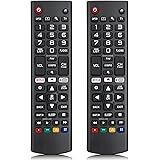Incorporating a home theater into your living space is a challenge that often takes careful thought to ensure the audio-visual systems work in harmony with the acoustics of the room. If your design doesn’t include the necessary components to create a movie-watching experience better than any commercial cinema, you will miss out on all the fun.
It’s important to plan a home theater layout that is as symmetrical as possible. This will provide a sense of balance and harmony to the room. This also helps with the seating arrangement, as all seats will have an optimal view of the screen. If your home isn’t large enough for three rows of theater seating, consider adding a row of loveseats to one side of the room to provide plenty of seats.
Ideally, your home theater should be located in the middle of the room with the video display (TV or projector) placed on the short wall. This will allow you to place your main speakers near the center of the room and be fairly equidistant from the seating area from left to right. Most home theater dealers will try to save money by not using an acoustically transparent screen when installing multi-row theaters, which puts the main center speaker below the screen and directly in the line of fire from front to back.
The surround sound system in your home theater should be positioned slightly behind the home theater seating. This will allow you to get the full effect of the surround sound effects and avoid having the surround speakers in front of the audience, which can cause a lot of distortion in some listening environments.
When choosing your seat types, think about the seating needs of your family and friends. There are many different styles of home theater seating available, ranging from recliners to standard theater chairs. Some seats come with seat accessories such as cup holders and swivel trays, which can add to the comfort of your seating arrangement.
Keep in mind that the colors and finishes in your home theater should be dark to help maximize viewing conditions. Anything that reflects light off of the screen or walls can degrade the viewing experience. Keeping your paints to flat and matte sheens will minimize this problem. Shiny doorknobs, hinges, recessed lighting trim kits, counters, heating registers and fireplace inserts should all be avoided in the critical viewing zone.
Finally, you will want to have a home theater riser on the rear row of your seating, if it is seated at or above the floor level of the first row of seats. This will raise the height of the second row and make sure that no one is sitting in front of a person with an obstructed view of the screen. Typically, the risers will be made out of wood or metal and should be in a matching color to the flooring. A great alternative is to use a bar stool for the back of this row, which will get people up high enough to avoid any sightline problems and take up far less depth in the room than a traditional home theater recliner.









